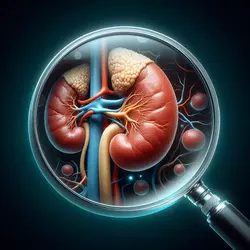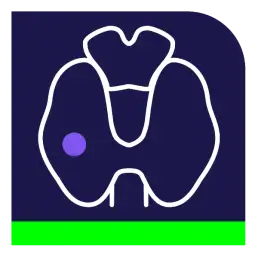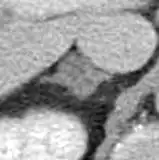Adrenal MRI Calculator for Chemical Shift
Reference:
Related Calculators:

More about the Chemical Shift Adrenal MRI Calculator:
Adrenal chemical shift MRI is a highly specialized imaging technique utilized to differentiate between benign and malignant adrenal lesions. It achieves this by detecting microscopic fat within adrenal nodules, which is a hallmark of lipid-rich adenomas. This non-invasive approach is instrumental in guiding clinical management by providing a reliable method to assess adrenal masses without requiring invasive procedures.
Understanding the Technique
Chemical shift MRI leverages the intrinsic differences in the magnetic resonance precession frequencies of fat and water protons. These differences produce signal variations that are captured through in-phase (IP) and out-of-phase (OOP) sequences, offering a powerful diagnostic tool for characterizing adrenal lesions.
- Image Acquisition:
- Both in-phase and out-of-phase images are acquired to detect differences in signal intensity.
- Shortest possible echo times are used to minimize T2* decay effects, which can reduce the T1 signal intensity and lead to inaccurate interpretations.
- High-resolution sequences ensure optimal image quality and accurate lesion characterization.
- Reference Tissue:
- The spleen is often used as a reference tissue because it lacks significant fat or hemosiderin deposits, ensuring consistency in signal intensity measurements.
- This comparison enhances diagnostic accuracy, particularly in cases where fat content in the lesion is subtle.
Interpretation and Key Metrics
Adrenal chemical shift MRI findings are interpreted based on the degree of signal loss between IP and OOP images. This is quantified using specific indices:
- Signal Loss: Lipid-rich adenomas exhibit significant signal loss on OOP images compared to IP images. This phenomenon is a direct result of microscopic fat content within the lesion.
- Quantitative Indices:
- Signal Intensity Index (SII): Measures the percentage of signal loss between IP and OOP images. A value greater than 16.5% typically indicates a lipid-rich adenoma.
- Adrenal-to-Spleen Signal Intensity Ratio: A ratio of less than 0.71 is highly suggestive of a lipid-rich adenoma.
Common Pitfalls and Technical Considerations
- Microscopic Fat vs. Macroscopic Fat: Chemical shift MRI identifies microscopic fat. Lesions with attenuation >10 HU on nonenhanced CT are unlikely to demonstrate fat content on MRI. In such cases, evaluation should include CT enhancement kinetics.
- T2* Decay Effects: Proper echo timing is critical. For 1.5-T MRI scanners, optimal echo times are approximately 2.2 ms (OOP) and 4.4 ms (IP). For 3-T MRI scanners, they are 1.1 ms (OOP) and 2.2 ms (IP).
- Non-Adenomatous Lesions: Malignant lesions, metastases, or pheochromocytomas typically lack significant signal loss on chemical shift MRI. Clinical correlation and additional imaging modalities are essential for accurate diagnosis.
Clinical Significance
Chemical shift MRI is a cornerstone in the non-invasive characterization of adrenal masses. By differentiating between lipid-rich adenomas and other pathologies, it helps avoid unnecessary biopsies or surgeries, providing a cost-effective and patient-friendly diagnostic pathway. This technique supports the workup of incidental adrenal findings, allowing healthcare providers to stratify risk and focus resources on clinically significant lesions.
When employed with a thorough understanding of its principles and limitations, the adrenal chemical shift MRI offers unparalleled insight into adrenal pathology, playing a vital role in the comprehensive evaluation of patients with adrenal abnormalities.



